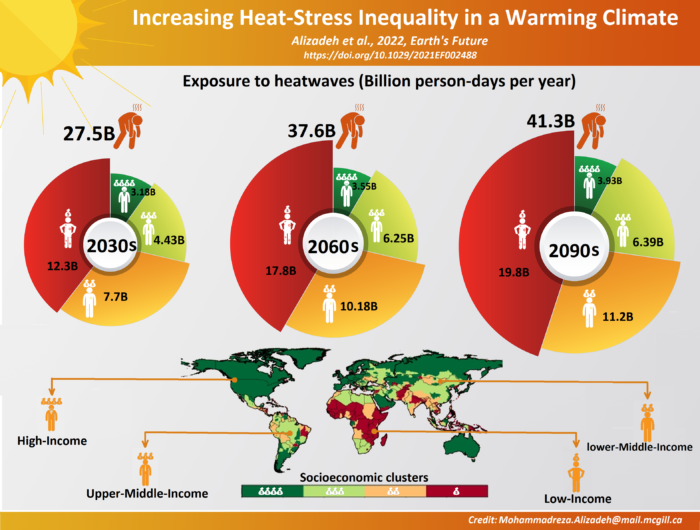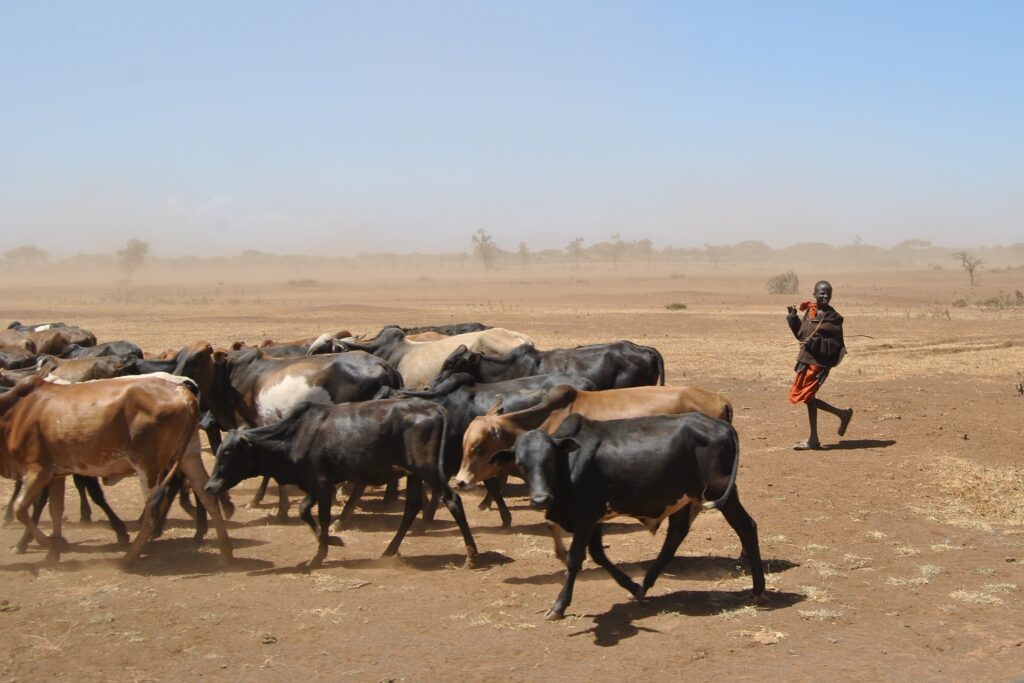Lower income populations currently face a 40% higher exposure to heat waves than people with higher incomes, and this inequality is expected to rise as temperatures increase, according to a new study.
By the end of the century, the poorest 25% of the world’s population will be exposed to heat waves at a rate equivalent to the rest of the population combined.
Poorer populations may be hit with a one-two punch of more heat waves from climate change due to their location and a lack of access to heat adaptations such as air conditioning.
The study analyzed historical income data, climate records and heat adaptations to quantify the level of heat wave exposure that people in different income levels face around the world. Exposure to heat waves was measured by the number of people exposed to heat waves times the number of heat wave days. Researchers paired those observations with climate models to predict how exposure will change over the next eight decades.

Published in the AGU journal Earth’s Future, the study found the lowest-income quarter of the world’s population will face a pronounced increase in exposure to heat waves by 2100, even taking into account access to air conditioning, cool air shelters, safety regulations for outdoor workers and heat safety awareness campaigns. The highest-income quarter, comparatively, will experience little change in exposure as their ability to keep up with climate change is generally greater.
People in the lowest-income population quarter will face 23 more days of heat waves per year than those in the highest income quarters by 2100. Many populous, low-income regions are in the already-warm tropics, and their populations are expected to grow, contributing to the discrepancies in heat wave exposure.
Mojtaba Sadegh, lead author and a climatologist at Boise State University, said, “We expected to see a discrepancy, but seeing one quarter of the world facing as much exposure as the other three quarters combined… that was surprising.”
Sadegh hopes the study will prompt innovations into affordable, energy-efficient cooling solutions as well as highlight the need for short-term solutions. “We need to raise awareness of dangers and heat safety, and to improve early warning systems — and access to those early warning systems,” he said.
To download a copy of the paper, click here.



